Growing your own vegetables is a wonderfully relaxing past time until it drives you to murder. Pests, predators, disease ... you want to kill them all. Try these disease resistant varieties to tip the scales in your favour.

I've talked about how gardening is my therapy. How it makes me feel all calm and at peace with the cable company. There are two things that can indeed lessen the positive effects of gardening: bugs and blight.
Any disease actually, not just blight. One of the good things about gardening in a community garden, like I do, is the social aspect of it. You talk to people, you dig dirt together, learn things, and help each other out. It's like being at a commune where you get go home at night and use a real toilet.
Community gardening is a real mood booster. But community gardening is also a bug, blight and bitching booster.
If you want a crash course in everything that could possibly go wrong with every possible vegetable, rent a community plot in an established garden for a season. It’s like starring in your grade 6 school play and then walking onto a Broadway stage. I’ve petitioned for several years asking to have a brass plaque be erected outside the gates of my community garden inscribed with the quote, “The community garden. If you can make it here you can make it anywhere. “
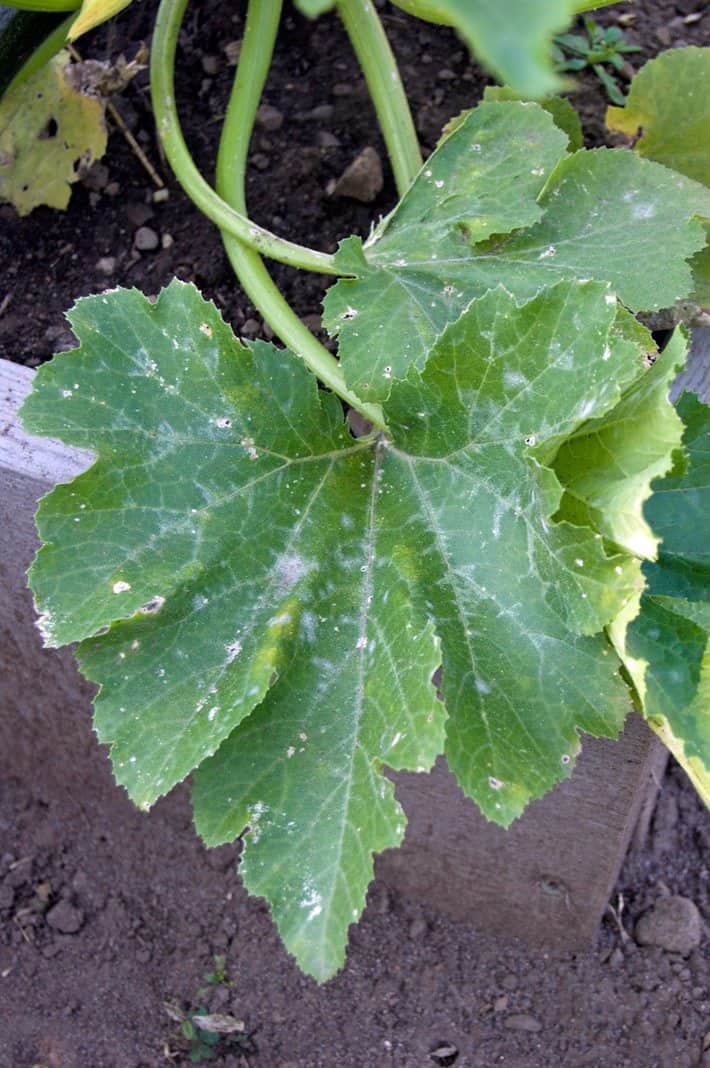
The dreaded powdery mildew.
This trouble with pests and disease is mainly a problem for people who are growing organically, which most of us are nowadays, on account of the fact that if we’re going to slowly kill ourselves we’d rather do it by atrophy from binge watching all 7 seasons of Game of Thrones in one weekend.
It’s amazing it took us so long to realize that spraying our food with actual poison, (complete with a skull and crossbones on the bottle) might be bad for us.
So what’s a gardener to do? I’ve tried it all. Covering my crops with row cover, planting trap crops, kill crops, using sticky traps, naked voodoo dances, and still I’m battling diseases that most gardeners have only read about in research publications.
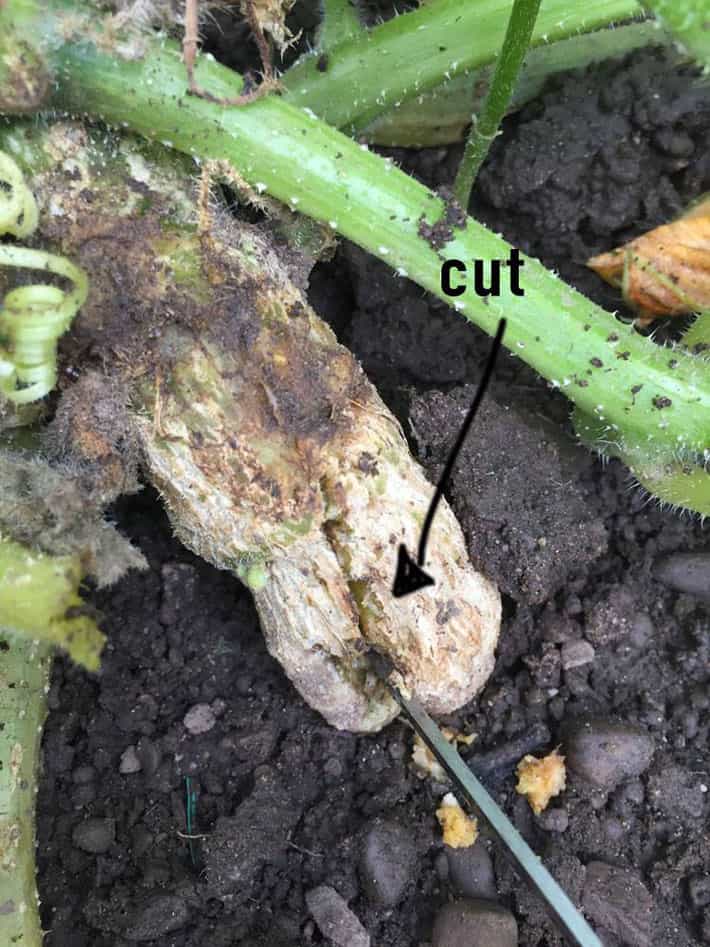
On this particular day I was cutting open the stem of a squash plant to find and pick out the squash vine borer that was eating my plant dead from the inside out.
Read my post on how to prevent and eliminate squash vine borers here!
This year I’m going to implement all of the above methods PLUS, I have what I think is a secret weapon; disease resistant varieties. Long gone are the days when I could plant a tomato based entirely on the fact that I liked it’s colour and weird shape. Nope. I’m now going to be happy no matter the colour or shape, so long as it lives past August. Even a plain. red. tomato. Gasp.
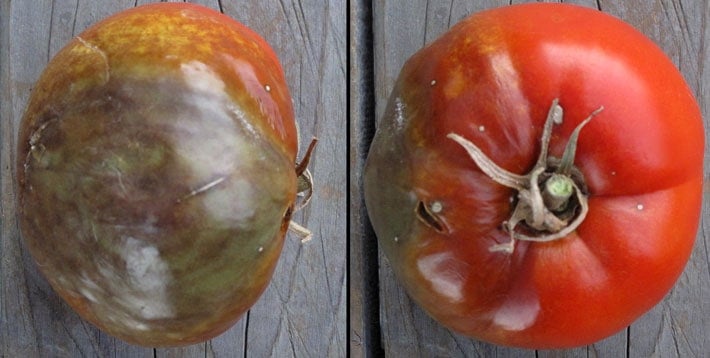
What does it mean if a plant is resistant to a disease? Resistant means the plant is inherently resistant at some level to a specific disease. It can mean it's relatively resistant or it's completely resistant. Either way it's *more* resistant to say ... blight ... than a regular tomato plant that doesn't have any resistance. Sometimes it's naturally resistant, like some heirloom varieties; sometimes it's bred into a hybrid plant by plant geneticists.
And just because a plant is resistant to one particular disease doesn't mean it's resistant to all the other diseases it might get.
In my neck of the community garden woods, there are 3 major diseases, which can completely obliterate crops.
- Late blight (in tomatoes)
- Powdery mildew (in zucchini)
- Bacterial wilt (in cucumbers)
Would you like to save this stuff?
So this year when my seed catalogues arrived in the mail (delivered straight off the wings of singing angels) I sat down and scoured them for disease resistant varieties.
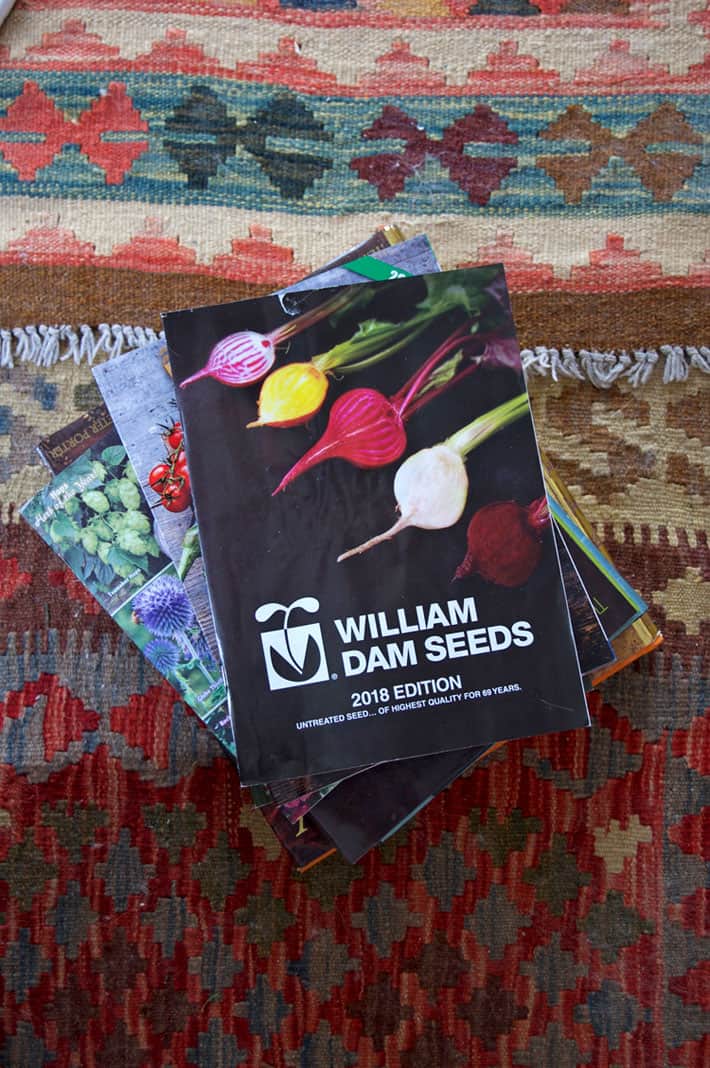
I get some kind of pest or disease on almost all of my vegetables so I focused this year on keeping my tomatoes, zucchini and cucumbers alive because the diseases they get kills them and does so quickly. After researching the catalogues, the Internet and polling gardening friends I came up with a list that I think should get any tomato, zucchini or cucumber grower through the season.
So if you too are affected by the dreaded late blight, powdery mildew or bacterial wilt (brought on by the cucumber beetle) then get ready to take notes.
DISEASE RESISTANT VEGETABLES TO GROW.
DISEASE RESISTANT TOMATOES
Pruden’s Purple – Heirloom variety tomato, resistant to late blight.
Tigerella – Heirloom variety tomato, resistant to late blight.
Iron Lady – F1 HYBRID tomato, resistant to early and late blight.
Mountain Merit – Determinate, resistant to late blight and various wilts.
Plum Regal – F1HYBRID tomato, resistant to late blight and various wilts.
ZUCCHINI
Dunja – F1 HYBRID, resistant to powdery mildew and cold weather
CUCUMBER
Regal – Pickling cucumber resistant to bacterial wilt and powdery mildew.
Marketmore – Slicing cucumber resistant to bacterial wilt and powdery mildew.
And now I sit, a cup of hot coffee in hand, staring out my window at the snow covered landscape, plotting my upcoming gardening season, vowing, that THIS will be the year it all goes as planned.
Just a heads up … it will not go as planned.



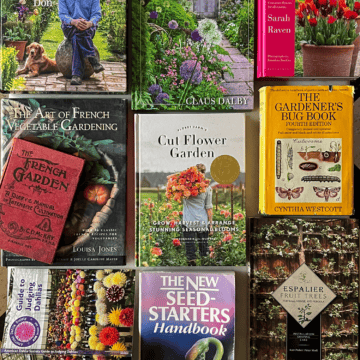
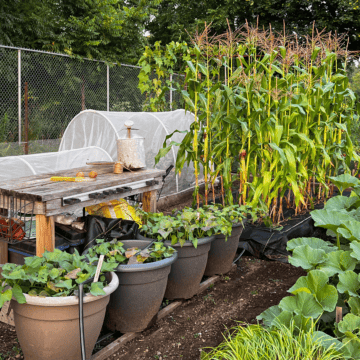
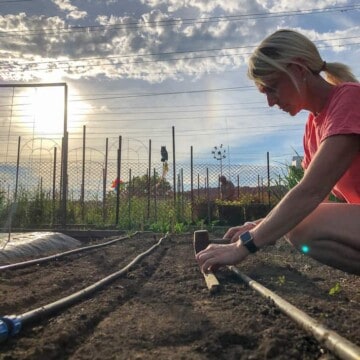
Gayle M
Preventative gardening: to prepare a plant for the onslaught of summer diseases, use an aspirin spray (plain, uncoated aspirin 250-500mg crushed and diluted in a gallon of water) every three weeks in the morning thoughout the growing season. It's like a vaccination for them, stimulating their immune system (yes they have one) to fight inflamation and disease. It's best to begin the regimen before disease starts in the garden. It worked wonders on my tomatoes, cukes, and zucchini.
Karen
Interesting! I'll have to look into that! ~ karen
Larissa D
Thank you so much for such great advice!
Jennie Concannon
I am going to try seeds from seed savers exchange. All heirloom non gmo seeds. My new favorite thing is heirloom tomatoes. I’ll let you know how everything works out.
Jo
Thanks for this Karen.
Am wondering though - would you care to share what your other seed catalogues are? Would be so grateful for some guidance in this area.
Karen
Hi Jo! Honestly I usually search for whatever seed I'm interested in, first in Canada, and then if I can't find it here I search in the States. So I'll get my seeds from wherever. But in terms of larger providers you can't go wrong with Stokes, Johnny's Select Seeds, William Dam, Vesey's, or Cubits. :) For more unusual tomato seeds Tatianas is great as is Tree & Twig. I've used all of these sources and have always had good luck with them. ~ karen!
Heather
You just HAVE to try diamant cucumbers! I get them from territorial seed company. They’re a bit expensive but so worth it! They are the hardest working cucumbers ever, they are resistant to powdery mildew and even if they do get powdery mildew they are such a strong producer they just keep going! Last summer was a bad powdery mildew summer here and when every thing else had given up on life I was still picking diamant cucumbers!
Sabina
Thanks for the list Karen! I'm looking forward to trying some of these. The first year I did seed starting in house I did great. The next two years not so great so last year I didn't bother and just bought my plants. I may have to clear off the table and pull out my supplies...but crap, I just remembered generous me gave the shop light I used to the bf for his shed. Sooooo, how about a post about best grow lights/setups for seed starting???? Just in case you don't have enough ideas swirling around in your head...
Karin
Do you find that diseases are more rampant in a community garden? Or do you have just as many problems in your home garden? I was thinking about looking into a community plot since I have to move my garden this year. Neighbors trees have grown too tall and shade my plot. But I've never really had problems with many diseases so I'm a little wary. Thanks!
Karen
WAY more rampant in a community garden. WAY MORE. That's why I say as a gardener if you can make it there you can make it anywhere. But it also depends on how long the community garden has been there. If only a couple of years, then it wouldn't be bad. ~ karen!
Richard
I joined a community gardener in Santa Fe Spring CA last year 2018 and I have garden most of my life and had very few problems at home. I was total surprised how bad it was the person is right the gardener in full of insects and disease, it all I can do to keep something alive because no matter how well you keep up you spots it the bad gardeners who do nothing to control the insects and disease in there plots. I grew yellow squash and it turned green and deformed I look it up and it was caused by a virus I never seen anything like this before. I'v been trying to help educate others on how important to keep the spots clean of weeds and insects and I working with the city person in charge to have him be tougher on gardeners that let there plots go and don't keep them up. I told him this is the only community garden ( we have over 120 10' x 20' plots) I ever seen that grows no food at all just a bunch of dead or dying plants my spots is only one of the few that grow something. I am going to do what the person said and try more disease resistant plants and row covers to see if this will help. I have a goal to hopefully improve our community garden. If you find what plants works best let me know
danni
I was going to sit with catalogues this weekend, thanks for doing the legwork for me!
Although every year there is the "grew it just for fun" selection, like last year's loofa.... what will it be this year, you ask? I live in Massachusetts, where I can legally grow a certain weed now. This old lady is gonna try that.
Karen
Our community garden has already been informed that we are discouraged from growing pot come July when it will be legal. :) ~ karen!
Cath
Crap on a crap cracker... guess I’ll have to keep my ‘three’ plants on the window sill😎
Lynne from Design The Life You Want To Live
Okay, I have no business doling out pointers on gardening because I tried that and I was able to grow one tomato. BUT. I have been reading a lot about diatomaceous earth these days for gardens, lawns. It's supposed to keep bugs/pests/creepy things away. Hmmmm.
Maybe worth trying it?
I bought the food grade one and take a tsp every day...so if I end up with some extra powder... I can just show up and sprinkle it like fairy dust on your garden when you aren't looking :)
Karen
Hi Lynne! Well, actually diatomaceous earth helps very briefly with things that crawl over it like slugs because it's sharp and jagged. But once the DT gets wet, it loses that quality so becomes ineffective. It's used in some chicken coops to help keep mites etc. out of nesting boxes, but when it's in there it stays dry so it can last longer. But you can still come over if you want. ;) ~ karen!
Susan Claire
That naked voodoo dance might be worth seeing!
Mike
I have found that with cukes, several applications of lime throughout the growing season keeps them healthier. They like higher pH soil, so it won't work as well with tomatoes
Chris White
Your post reminded me of the Robert Kroetsch poem, "Seed Catalogue" where the poet recounts things that shaped his life growing up on the Prairies. Each section is punctuated with a seed catalogue description, extolling the virtues of a particular hardy seed variety. I reread the poem every spring. My favourite line, "Into the dark of January / the seed catalogue bloomed".
Melissa
Chris, this poem sounds lovely.
Jenny
If anyone is interested in a sample of this poem, a reviewer on GoodReads posted an excerpt in their review.
https://www.goodreads.com/book/show/826775.Seed_Catalogue
Chris White
It's lovely, funny, rough, serious. A unique depiction of a young man learning about himself as he grows up. I hope you get a chance to read it!
Jennifer
That sounds really interesting--thanks for the recommendation. I've just put a hold on the book at the library. Always looking for book recos related to gardening!
Anne
Wow Karen, Thanks so much, I'm getting out my catalog today! I always lose my tomatoes, I guess it's goodbye to my favorite "Mr. Spripey". I'm sending a photo of part of my garden that I made myself! Thanks for the great posts, Annie
Debbie
Anne, your garden is gorgeous!!!! Beautiful!
Melissa
Annie, beautiful garden! What's that lush crop growing in the bottom left box?
As for tomatoes, we find that the smaller, the better.
Mindy Northrop
Stunning!
Karen
Really nice! I love the brick pathways. ~ karen!
Hazel
Blight is my biggest scourge and I'm glad to see Tigerella is resistant to blight as it's one of my favourites and I'm growing it again having not for a few years (hope I still like it!). I'm also trying Matt's Wild Cherry as that's been recommended.
Eileen
I tried Matt's wild cherry a couple of years ago and was very disappointed. The tiny tiny fruits it finally bore were tasteless, the plant was sickly....maybe it depends on climate. I am Mid-Atlantic US and we have dreadfully hot/humid summers which are not good for tomatoes. They stop producing when temps are too high.
Hazel
Hmmm, I won't get too excited just yet then, although I'm in the UK so high heat is unlikely to be a problem ;-)
Erin G
Matt's Wild Cherry grow fantastically for us - don't give up! Great flavour has a lot to do with your soil health and nutrition. And prepare to stake them, tiny tomatoes but the plants can grow to 6ft.
Hazel
Thanks for that, fingers crossed then!
Janet Fisher
I grow african violets as show plants. I grow the violets inside under lights. When I get an outbreak of powdery mildew, I spray my plants with Lysol. I grow a few tomato plants and I have used Lysol on the leaves. Powdery mildew is gone.
Mindy Northrop
I've been gardening for over twenty years and have never heard of using Lysol. I will definitely keep that trick in my back pocket, thank you!
Janet Fisher
I spray the Lysol only lightly above the plants and let the spray gently fall on the leaves. I do not spray directly aimed at the leaves because the canned Lysol comes out very cold. I do not spray it on the flowers. I have done this for years and it works for me. Again, just make sure you spray a fine mist above the plant and let it fall onto the plant. Sometines a fine mist of baking soda and water will also help with powdery mildew.
Karen
Lysol. Yikes. That scares me for some reason, lol. I do spray with a mixture of water and vinegar and it helps stop powdery mildew once it's started. Hmm. Lysol. I'll have to look into it. ~ karen!
Therese
I was a little late reading your post tonight. I just picked up most of my seed for the year today at my local "Garden Works" sale. :(
Now I will have to see what I have that is "disease resistant". Hmm.
On a different note, have you ever tried v a r i o u s beet, carrot, and sweet potato chips? I had tried some once and thought they were horrid, but I tried another variety tonight for a party, and they were fantastic! All 3! Just a thought when planning a garden....
TEW
Karen
HI Therese. I don't see a lot of reason for eating chips made with other vegetables, lol. Potatoes are just as healthy as those other things and in either case chances are they're fried in oil so whether it's a beet fried in oil or a potato .. it doesn't make much difference in terms of being any better for you. p.s. even if they were baked beet chips ... I'd rather eat my beet in it's natural beet state, lol. ~ karen!
Therese
:) I hear you.
I also love pickled beets...and just cooked too.
Yes, I am in agreement with the frying. It was the taste of these ones from last night, that was very different from what I had experienced before.
Don't get me wrong - I love potato chips too! My husband and I are part of the Anti Atkins movement and eat carbs a lot :).
Do you have any seed recommendations for coloured carrots or beautiful looking pumpkins/gourds? I need a healthy crop to produce for my town's fall fair....
TEW
Karen
Hi Therese - My favourite coloured carrots are Purple Sun (deep purple skin and deep purple interior ... truly the BEST purple variety), Paris Market carrots (round like a golf ball), Lunar White carrots, Purple Dragon or Cosmic Purple for a purple exterior and orange interior and for yellow my favourite is Jaune du Doubs. For Squash my favourites are Honey Nut (which looks like a butternut but is only the size of a man's fist), and Grey Ghost. ~ karen!
TEW
thank you!
Gayle M
So now you're buying those "Dam" seeds! lol
Gayle M
Oh, and thank you, by the way. I have the same issues. Never ending battle. Good thing farmers can get their crops to market to supplement my well meaning attempts at growing my wn food.
Ritz
Does "disease resistant" mean GMOs?
Gayle M
Ritz, most of what I plant that is deer resistant has texture, taste or toughness that deer don't like. Think heavy scent. Fuzzy or thorney leaves. Etc.
Ritz
Thanks for the info, Gayle.
Alisa
No, lots of varieties - including heirlooms - are naturally resistant. As of now, GMOs are largely just for farmers. Backyard gardeners are not the market for them.
Ritz
Thanks, Alisa. I've been holding off on planting because I wasn't sure if my seeds were GMO or not. I just researched what you wrote, and as soon as it gets warmer, I'll be a container farmer again!
Karen
??? No. On a very base level what you're talking about is plants that have pesticides bred right into the seeds. It's mainly seen in corn and soy. These are plants that are either naturally disease resistant from day o ne (as is the case with some heirloom varieties) or they've been bred and hybridized to be resistant to certain diseases. ~ karen
Ritz
I get it now, Karen. I was thrown off a bit because I recently was given some packets of seeds for radishes and the term "No GMOs" was stamped on them. That caused me to be suspicious of all my other seeds. I have since apologized to them for my ignorance. I will be planting them soon.
Beth
I think it's a marketing ploy, like labeling a bag of coffee beans "Gluten Free". Since many people think No GMO is better they will slap it on the label. In both cases the competition (the bag of coffee or package of basil seeds) is also gluten/GMO free but didn't put it on the label.
Karen
Uch, lol. That's like when they label milk or a box of envelopes as being "gluten free", lol. Plant away. ~ karen!
Katie Schneider
So...when's the post on how to identify which kind of blight your blankity-blank blighted tomatoes have? And I thought powdery mildew was inescapable...!
Katie Schneider
OMG...am I first?! *SQUEAL*
You're my hero, btw.
Karen
The other thing you can do for powdery mildew Katie is to remove all the large bigger leaves from plants like zucchini. The plant has no use for them anyway. They get their energy from the newer, smaller leaves. Spraying on this concoction also helps a lot. ~ karen!
Katie Schneider
See?! I didn't know that nekked plants = healthy ones. I've used sprays before and they help, but I live in the Pacific Northwest so I haven't been able to keep up. I'll try stripping the big leaves this year!